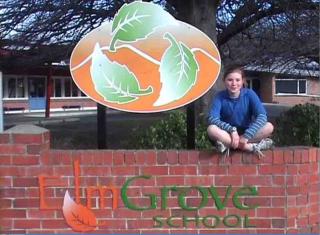
- Duration:
-
2:55
- Views:
- 2410
Digital story: Elmgrove School
Background
Elmgrove School is four years old. We were three schools that merged. When the schools merged in 2004 we had lots of work to do, like changing buildings to fit more kids, adding new toilets and teaching areas.
When the school started the teachers, parents and some children talked about what was important for the children at our school to learn. They came up with our school vision. We want our children to be socially co-operative, personal managers, information literate, capable communicators, effective thinkers and to do daily physical activity.
In Kids' speak that means we want our children to be:
- friendly and fair
- organise themselves
- read, write and talk about information
- speak, listen and show respect
- creative, critical and caring
- active
We have lots of cool things that happen at our school, like TechnoKids, PALs, dance and performing groups because our teachers and parents thought it would be important to start the new school with lots of children's input.
Inquiry process
There's lots of ways we learn. Our teachers explain what we need to know and why by using WALTs (We are learning to...), our school vision and GROVER - our inquiry process:
G - get the big picture
R - research the topic
O - organise the information
V - voice your new knowledge
E - evaluate how you work
R - reflect on each step
We have lots of technology at our school and we also have an information centre to help us find information in the best way.
Learning environment
Everyone at our school has investigated ourselves to find out our learning styles, so some of us do brain breaks, some do sign language. We play games. We have lots of drama and music. We pay attention to our learning area and then we teach other people so we know it really well.
We are responsible for our learning. Our teachers let us know how we are doing with our goals and our learning, by telling us and writing it for us. They praise us and reward us. They give us next learning steps and get us to explain things to other people. Then we make choices about how we are learning and we evaluate what we are doing.
The future
Following this development we have spent a year consolidating and embedding what we have learned into everyday teaching and learning.
Now we want to align our school vision and the key competencies with the inquiry learning process, values and what is important to learn.
In the story, Tim explains the inquiry process (GROVER) the school has developed and embedded in their daily teaching and learning.
The effective pedagogy section of The New Zealand Curriculum includes this statement:
While there is no formula that will guarantee learning for every student in every context, there is extensive, well-documented evidence about the kinds of teaching approaches that consistently have a positive impact on student learning. This evidence tells us that students learn best when teachers:
- create a supportive learning environment
- encourage reflective thought and action
- enhance the relevance of new learning
- facilitate shared learning
- make connections to prior learning and experience
- provide sufficient opportunities to learn
- inquire into the teaching-learning relationship
Discuss the teaching approaches that your school has in place in light of the evidence The New Zealand Curriculum says enables students to learn best.
Published on: 16 Jun 2008
Return to top


